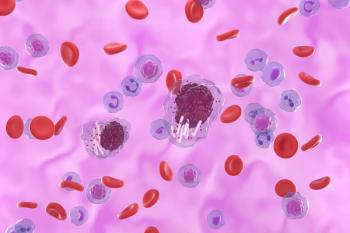
Higher Oxidative Balance Score Linked to Lower Systemic Inflammation, Study Finds
Key Takeaways
- A negative correlation exists between oxidative balance score (OBS) and systemic immune-inflammation index (SII), indicating higher antioxidant capacity reduces inflammation.
- OBS is calculated from dietary and lifestyle factors, while SII is derived from lymphocyte, neutrophil, and platelet counts.
Researchers discovered a significant negative correlation between an individual's oxidative balance score and systemic immune-inflammation index, highlighting the role of antioxidants in reducing inflammation.
A linear negative correlation exists between the oxidative balance score (OBS) and the
The authors of the
The OBS is a measure of an individual’s total antioxidant capacity, which
Although past studies have shown that oxidative stress and inflammation are interrelated, the researchers highlighted the need for large-scale population data to further validate this association.1 Consequently, they analyzed data from the National Health and Nutrition Examination Survey (NHANES) to explore the relationship between OBS and SII among US adults.
The researchers calculated the OBS using 5 pro-oxidants and 15 antioxidants, with dietary intake data collected through participant interviews. Antioxidants received higher scores with greater intake, and pro-oxidants received higher scores with lower exposure. Additionally, alcohol consumption and physical activity were scored according to specific guidelines. The total OBS was the sum of all individual scores.
Meanwhile, the SII was calculated by multiplying the platelet count by the neutrophil count and dividing by the lymphocyte count.
The association between OBS and SII was analyzed using 3 multivariate linear regression models. Model 1 was unadjusted, Model 2 adjusted for age, gender, and ethnicity, and Model 3 further adjusted for education level, marital status, family poverty income, diabetes, and hypertension. The researchers also conducted subgroup and linear relationship analyses for deeper insights; multiple sensitivity analyses were performed to ensure the robustness of their findings.
The study encompassed data from 8 NHANES cycles, spanning 2003 to 2018. Of the 80,312 participants included in these cycles, 16,080 were eligible for further analysis, representing a weighted population of 304,004,766. Most participants were about 45 years old, non-Hispanic White (non-weighted frequency, 50.32%), married or cohabiting (non-weighted frequency, 61.52%), and had higher education levels (non-weighted frequency, 83.88%).
Participants with higher OBS were more likely to be female (weighted frequency, 73.6%), while those with lower OBS were more likely to be male (weighted frequency, 66.3%; P < .001). The researchers also highlighted that SII gradually decreased as OBS increased (P < .001).
Therefore, in Model 1, higher OBS quartiles were significantly associated with greater decreases in SII (β = −64.93; 95% CI, −80.95 to −48.91; P < .001). This association remained significant in Model 2 after adjusting for potential confounding variables (β = −61.14; 95% CI, −78.21 to −44.06; P < .001). In the fully adjusted model, SII decreased by 51.52 units among those in the highest OBS quartile.
The researchers identified a significant linear relationship between OBS and SII using a restricted cubic splines plot with 4 knots after adjusting for all covariates (P-non-linear = .677). This further indicated a negative relationship between them, meaning that SII decreased as OBS increased.
Three sensitivity analyses consistently validated the reliability of these results. Additionally, interaction testing showed that age and hypertension significantly influenced the association between OBS and SII (P < .05).
The researchers concluded by acknowledging their limitations, including the study's cross-sectional design, which prevents causal inference. They also noted that oxidative balance is complex, so including additional indicators could improve the accuracy of their results. Despite these limitations, the researchers expressed confidence in their findings and identified directions for further research.
“This study emphasizes the importance of promoting an individual’s overall antioxidant status through diet and lifestyle, which may aid in reducing inflammation levels,” the authors wrote. “Moving forward, further research is needed to delve into the precise mechanisms underlying oxidative stress and inflammation.”
References
- Niu Y, Fan Z, Wang Z, Liang S. Association between oxidative balance score and systemic immune-inflammation index: NHANES 2003-2018. PLoS One. 2025;20(8):e0329540. doi:10.1371/journal.pone.0329540
- Zhang W, Peng SF, Chen L, Chen HM, Cheng XE, Tang YH. Association between the oxidative balance score and telomere length from the National Health and Nutrition Examination Survey 1999-2002. Oxid Med Cell Longev. 2022;2022:1345071. doi:10.1155/2022/1345071
- Liu B, Wang J, Li YY, Li KP, Zhang Q. The association between systemic immune-inflammation index and rheumatoid arthritis: evidence from NHANES 1999-2018. Arthritis Res Ther. 2023;25(1):34. doi:10.1186/s13075-023-03018-6
Newsletter
Stay ahead of policy, cost, and value—subscribe to AJMC for expert insights at the intersection of clinical care and health economics.









































